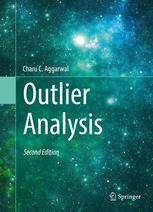

Most ebook files are in PDF format, so you can easily read them using various software such as Foxit Reader or directly on the Google Chrome browser.
Some ebook files are released by publishers in other formats such as .awz, .mobi, .epub, .fb2, etc. You may need to install specific software to read these formats on mobile/PC, such as Calibre.
Please read the tutorial at this link. https://ebooknice.com/page/post?id=faq
We offer FREE conversion to the popular formats you request; however, this may take some time. Therefore, right after payment, please email us, and we will try to provide the service as quickly as possible.
For some exceptional file formats or broken links (if any), please refrain from opening any disputes. Instead, email us first, and we will try to assist within a maximum of 6 hours.
EbookNice Team

Status:
Available0.0
0 reviewsThis book provides comprehensive coverage of the field of outlier analysis from a computer science point of view. It integrates methods from data mining, machine learning, and statistics within the computational framework and therefore appeals to multiple communities. The chapters of this book can be organized into three categories:
• Basic algorithms: Chapters 1 through 7 discuss the fundamental algorithms for outlier analysis, including probabilistic and statistical methods, linear methods, proximity-based methods, high-dimensional (subspace) methods, ensemble methods, and supervised methods.
• Domain-specific methods: Chapters 8 through 12 discuss outlier detection algorithms for various domains of data, such as text, categorical data, time-series data, discrete sequence data, spatial data, and network data.
• Applications: Chapter 13 is devoted to various applications of outlier analysis. Some guidance is also provided for the practitioner.
The second edition of this book is more detailed and is written to appeal to both researchers and practitioners. Significant new material has been added on topics such as kernel methods, one-class support-vector machines, matrix factorization, neural networks, outlier ensembles, time-series methods, and subspace methods. It is written as a textbook and can be used for classroom teaching.